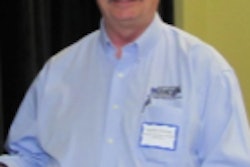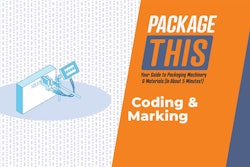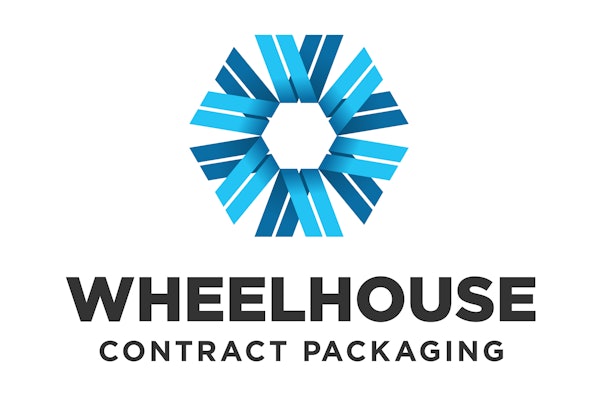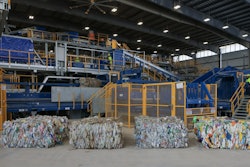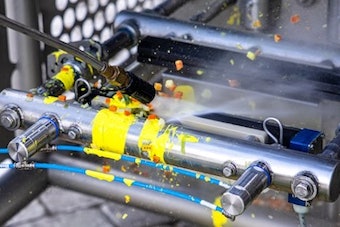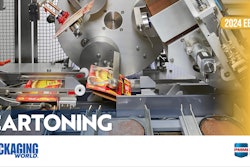You might think that making chocolate candy is one of the world's more enviable jobs. But staring at the processing equipment while thousands of little chocolate balls are formed and dumped in a bin for an entire eight-hour shift is enough to make you go home seeing spots. That's why the folks at Oak Leaf Confections looked into why it was necessary to have that person at the machine watching the process in the first place.
Oak Leaf Confections manufactures bubble gum, hard candy, and chocolates at its Toronto, Ontario facility. One machine molds chocolate into little balls that are eventually processed with a sugar coating and packaged in a variety of packages to be sold as Sixlets. The molding of chocolate candy is largely a process of pouring tempered liquid chocolate into molds as the molds move along a conveyor belt. The molds pass through separate stations where the liquid chocolate is vibrated to remove trapped air and cooled; or where various fillings are introduced to the chocolate; or where other processes are applied. After the chocolate is formed, the individual pieces are removed from the molds either automatically or by hand and individually wrapped, assembled, or otherwise packaged.
Ray Gauvin, master electrician, is the plant electrician/engineer at Oak Leaf. He started looking for a solution to a problem with the rolls caused by inconsistent levels of chocolate that put a limit on production quantities. The constraint started with the flow valve, which actually was just a hose with some clamps that were manually adjusted to control the flow. A person had to watch the three rolls to assure all the molds were filled or else the roll would freeze up, stopping production. Gauvin estimates that the machine experiences about two percent downtime.
Automation to the rescue
A breakthrough came when he discovered a modulating process valve from Radius that was food-rated and whose actuator had enough torque to handle chocolate as it begins to solidify. The actuator had an analog output, making it ideal for control with a programmable logic controller (PLC). Gauvin coupled the valve with two ultrasonic level sensors from Pepperl + Fuchs. An Omron CP1L 30I/O PLC controlled the process. With this automated system, underfilling became a rarity and the person with the job of staring at rolls all day could be switched to more productive work. A camera aimed at the rolls feeds video to a monitor located at the head of the line where the operator can watch for problems in a more efficient manner.
Gauvin says he has worked with Omron on plant controls for years. In fact, Omron's Steve Wyatt, an application specialist, came in to program the proportional controls at the heart of the system. The net result is that production is up and "scrap" chocolate is down. The machine processes about 1,013,350 kg per year of chocolate and Gauvin estimates about 2,225 kg per year savings.
Oak Leaf Confections manufactures bubble gum, hard candy, and chocolates at its Toronto, Ontario facility. One machine molds chocolate into little balls that are eventually processed with a sugar coating and packaged in a variety of packages to be sold as Sixlets. The molding of chocolate candy is largely a process of pouring tempered liquid chocolate into molds as the molds move along a conveyor belt. The molds pass through separate stations where the liquid chocolate is vibrated to remove trapped air and cooled; or where various fillings are introduced to the chocolate; or where other processes are applied. After the chocolate is formed, the individual pieces are removed from the molds either automatically or by hand and individually wrapped, assembled, or otherwise packaged.
Ray Gauvin, master electrician, is the plant electrician/engineer at Oak Leaf. He started looking for a solution to a problem with the rolls caused by inconsistent levels of chocolate that put a limit on production quantities. The constraint started with the flow valve, which actually was just a hose with some clamps that were manually adjusted to control the flow. A person had to watch the three rolls to assure all the molds were filled or else the roll would freeze up, stopping production. Gauvin estimates that the machine experiences about two percent downtime.
Automation to the rescue
A breakthrough came when he discovered a modulating process valve from Radius that was food-rated and whose actuator had enough torque to handle chocolate as it begins to solidify. The actuator had an analog output, making it ideal for control with a programmable logic controller (PLC). Gauvin coupled the valve with two ultrasonic level sensors from Pepperl + Fuchs. An Omron CP1L 30I/O PLC controlled the process. With this automated system, underfilling became a rarity and the person with the job of staring at rolls all day could be switched to more productive work. A camera aimed at the rolls feeds video to a monitor located at the head of the line where the operator can watch for problems in a more efficient manner.
Gauvin says he has worked with Omron on plant controls for years. In fact, Omron's Steve Wyatt, an application specialist, came in to program the proportional controls at the heart of the system. The net result is that production is up and "scrap" chocolate is down. The machine processes about 1,013,350 kg per year of chocolate and Gauvin estimates about 2,225 kg per year savings.
